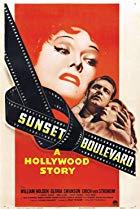Genre
Genre
My genre for this film will be a drama/noir. In the drama I want crime to be incorporated. The typical audience for this genre is targeted at older adults because they grew up with this sort of film. Film noir, or in French "black film" refers to a period of film in the early 1940s to the late 1950s. It is known to be very theatrical and came from an early era of German expressionist cinema. These films were created directly after WWII; for movie audiences, this new type of film was fresh, exciting, and entertaining.
Lighting is a key convention which stylized the film noir movies. Conventionally lighting is low key (a style called Chiaroscuro) and cleverly creates shadows concealing and is highly contrasting revealing various parts of the mise-en-scene. They use hard lighting to create sharp shadows with props and soft lighting to glamorize female characters. This is often known as "femme fatal". Another major convention is setting. The setting for film noir is usually an urban area like New York or Chicago. There are dark, bleak, disturbing settings. Bars, lounges, and nightclubs usually appear as settings.
The difference between men and women in film noir is very distinct. The male is the great protagonist and has been like that for years. The female characters in film noir use their sexual attractiveness, provocative clothing and appearances to lure in men, manipulating them to gain money, independence, and power (get it ladies!!!). Their costumes are very seductive and revealing while their make up is heavy with black eyes and red lips. These characters have been named 'femme fatale' and are very different from the devoted wife and loving mother mainstream look that society has portrayed women as. Many iconic features in film noir are : cigarettes and smoke, dark sidewalks, alcohol, guns, trench coats, rain, flashing neon sign, and the color red.
Film Noir knew how to connect with its audiences during the hardships of the aftermath of WWII. As soldiers returned home and women lost their jobs at the end of the world, the upbeat, pre-war propaganda films were replaced by films that projected cynicism. A harsh sense of reality now descended over America and audiences wanted to see it reflected in their movies. So they preferred seeing everyday people on the street in actual locations rather than artificial sets. Noir films were characterized by darkness and long shadows that were both symbolic and practical. They helped create the gloomy mood portrayed in the films and also hid the fact there was no set to show since noir films were often made on low budgets. The effect was created by the use of lighting or in some cases, the lack of it. These were great techniques used in their marketing.
One great film that represents Noir is "Sunset Boulevard". While the film did have the typical cigarettes and low key lighting with the sharp shadows, it was the storyline that brought out the darkness. in the film of Sunset Boulevard by Billy Wilder (1950), the evilness and the guilt was a scene where Norma Desmond (Gloria Swanson) found out that Joe (William Holden) went out very frequently at night which she also found out that he is seeing another woman who is Betty (Nancy Olsen). Immediately, she plotted a scheme, gave a call to Betty and tells her about Joe. She never knew that Joe is back and when she knew that is too late because Joe already knows her scheme then she cut herself and act in pain in order to win a sympathy from Joe. Nevertheless, Joe decided to leave her and she shot him to death. In this scene, it shows how evil she is in plotting a scheme to break up Joe's and Betty's relationship and killing him in the end for leaving her, and also the guiltiness for what she had done in cutting herself to win his attention. This brutal storyline is an exact matchup to a film noir.
Another fantastic film noir example is "Touch of Evil". This movie is a stark, perverse story of murder, kidnapping, and police corruption in a Mexican border town. Although unappreciated in its time in the US, a box-office failure, and criticized as artsy, campy, sleazy pulp-fiction trash, the low-budget film - in retrospect - has been ranked as the classic B-movie of the silver screen. It was regarded as a rebellious, unorthodox, bizarre, and outrageously exaggerated film, affronting respectable 1950's sensibilities, with controversial themes including racism, betrayal of friends, sexual ambiguity, frameups, drugs, and police corruption of power. Its central character is an obsessed, driven, and bloated police captain ("a lousy cop") - a basically tragic figure who has a "touch of evil" in his enforcement of the law. This movie has all of the known concepts of a film noir but with a hint of comedy.
Here is a list of the top five film noirs:
1. Sunset Boulevard

2. The Maltese Falcon

3. The Third Man

4. Rebecca

5. Touch of Evil

Thanks for reading my genre blog and I hope you have a fantastic day! Stay tuned for the next post!
No comments:
Post a Comment